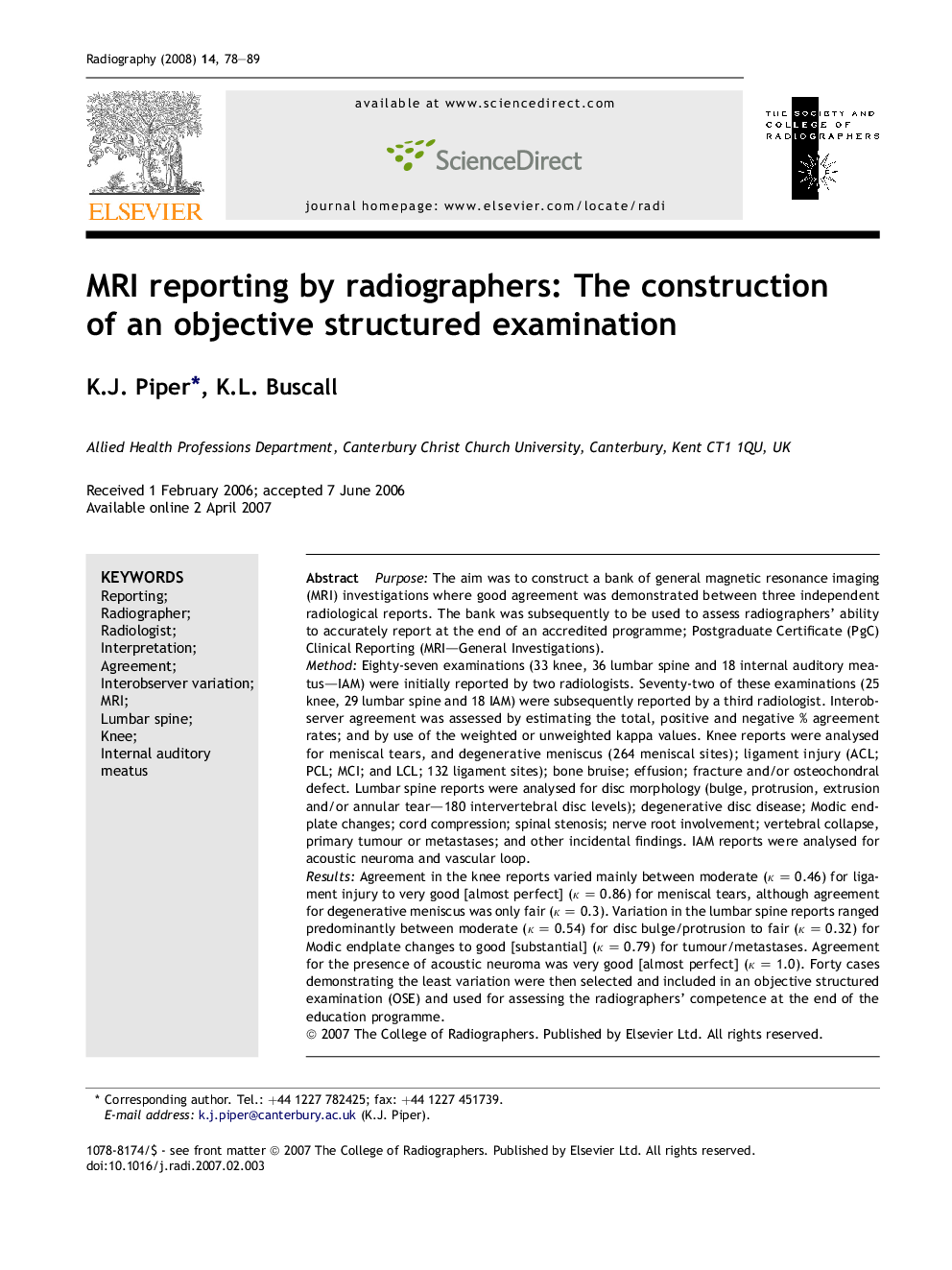| Article ID | Journal | Published Year | Pages | File Type |
|---|---|---|---|---|
| 2735104 | Radiography | 2008 | 12 Pages |
PurposeThe aim was to construct a bank of general magnetic resonance imaging (MRI) investigations where good agreement was demonstrated between three independent radiological reports. The bank was subsequently to be used to assess radiographers’ ability to accurately report at the end of an accredited programme; Postgraduate Certificate (PgC) Clinical Reporting (MRI—General Investigations).MethodEighty-seven examinations (33 knee, 36 lumbar spine and 18 internal auditory meatus—IAM) were initially reported by two radiologists. Seventy-two of these examinations (25 knee, 29 lumbar spine and 18 IAM) were subsequently reported by a third radiologist. Interobserver agreement was assessed by estimating the total, positive and negative % agreement rates; and by use of the weighted or unweighted kappa values. Knee reports were analysed for meniscal tears, and degenerative meniscus (264 meniscal sites); ligament injury (ACL; PCL; MCI; and LCL; 132 ligament sites); bone bruise; effusion; fracture and/or osteochondral defect. Lumbar spine reports were analysed for disc morphology (bulge, protrusion, extrusion and/or annular tear—180 intervertebral disc levels); degenerative disc disease; Modic endplate changes; cord compression; spinal stenosis; nerve root involvement; vertebral collapse, primary tumour or metastases; and other incidental findings. IAM reports were analysed for acoustic neuroma and vascular loop.ResultsAgreement in the knee reports varied mainly between moderate (κ = 0.46) for ligament injury to very good [almost perfect] (κ = 0.86) for meniscal tears, although agreement for degenerative meniscus was only fair (κ = 0.3). Variation in the lumbar spine reports ranged predominantly between moderate (κ = 0.54) for disc bulge/protrusion to fair (κ = 0.32) for Modic endplate changes to good [substantial] (κ = 0.79) for tumour/metastases. Agreement for the presence of acoustic neuroma was very good [almost perfect] (κ = 1.0). Forty cases demonstrating the least variation were then selected and included in an objective structured examination (OSE) and used for assessing the radiographers’ competence at the end of the education programme.
